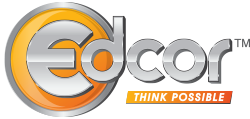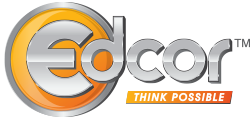March is known for International Women’s Day – a day when social media feeds are flooded with how far women have come and what organizations are doing to help their diverse workforce, especially women. It’s the year 2024, yet the latest report by The World Bank shows a wider-than-expected gender gap globally on how the scales are still unbalanced leaving women heavily disadvantaged.
Tea Trumbic, the report’s lead author said “It is more urgent than ever to accelerate efforts to reform laws and enact public policies that empower women to work and start and grow businesses. Today, barely half of women participate in the global workforce, compared with nearly three out of every four men. This is not just unfair—it’s wasteful. Increasing women’s economic participation is the key to amplifying their voices and shaping decisions that affect them directly. Countries simply cannot afford to sideline half of their population.”
The bittersweet reality remains that each year 28% of women leave the workforce to be primary caregivers to children, compared to 10% of men. While the benefits of being a working mom are great, they also come with certain burdens. The majority of the women who stay in the workforce, downshift, or do not take challenging roles to balance the demands on their time.
The Bureau of Labor Statistics reported that 2.4 million women left the workforce during the pandemic to shoulder the burdens of childcare, elderly care, and household responsibilities. Women were worse off due to a lack of childcare during the pandemic – 59% of unemployment claims were from women in the first weeks of the pandemic, despite them being only half of the labor force. According to a study by SHRM, men have gained all jobs lost during the pandemic but women are still short by 1.8 million jobs lost since Feb 2020.
Together with allowing for flexible schedules, remote work, and onsite or nearby childcare support, Education benefits can play a strategic role in uplifting women at work and bringing the women who took a break back into the workforce. Since Diversity, Equity, and Inclusion (DEI) remains a priority for Fortune 500 CEOs and beyond, Corporate America should anchor the DEI strategy in education benefits.
This is how each of the education benefits would help.
Tuition Reimbursement:
Education benefits have historically been popular as strategic tools for attracting and retaining top talent, employee engagement, and building an internal talent pipeline. However, they also tie in with the DEI strategy in the following ways:
- Level the playing field by providing access to college education imperative for career progression for those women who want to join back the workforce in different roles more suitable for their new lifestyle, which may require upskilling or a different degree
- Break financial barriers hindering women to go to school, and help them gain financial stability
- Bridge the wide pay disparity between college grads and non-degree holders
- Enhance employee engagement and satisfaction by supporting professional development
Debt-free degrees:
However attractive a degree may be, one cannot deny the fact that it comes with a burden of upfront out-of-pocket expenses and student loans posing as a barrier for women and minority populations to go back to school. Third-party specialized HR benefits providers, like Edcor, can help secure zero out-of-pocket expense programs in collaboration with their partner schools – also popularly known as debt-free degrees. These are designed such that the school scholarships or grants cover tuition over and above the employer contribution of $5250+. Most of them have a deferral agreement in place or a direct bill option resulting in no out-of-pocket costs for the learners! This has a direct effect on women and diversity groups since it removes a major barrier to going back to school. More and more schools in the Edcor school network are offering these debt-free degrees, and we have seen a positive uptick in these programs with many of our client employees, especially women.
Holistic approach towards the Tuition Reimbursement Policy:
Looking beyond traditional degrees is now more important than ever because not all bands of employees would benefit from a degree. Some require Certificates and Certifications for career progression and to fill skill gaps, especially for women who are returning to work after a break. Including short-term upskilling courses like professional Certificates and Certifications under the Tuition Policy is a positive enabler.
Academic Advising with Tuition Assistance
Academic Advising makes learners better consumers – rather than signing up with the school down the road or the school with the biggest marketing budget – learners are able to make the best choice for their careers. Advising also helps to stretch tuition assistance or out-of-pocket dollars further. For working women, it takes out the overwhelming pressures to navigate through heaps of information while balancing the act between their personal and professional lives.
Student Loan Repayment Assistance:
You probably know that the U.S. student loan debt stands at a staggering 1.7 trillion from 45 million borrowers. But did you know that women owe two-thirds of this student debt? Further, women of color cart a disparate burden – black women have about 20% more student loan debt than their white counterparts.
Student Loan Repayment Assistance helps by:
- Reducing financial worries and enhancing employee wellbeing.
- Affording flexibility in implementation:
– Companies can choose to offer this to a very specific group of employees for DEI, recruitment, and retention purposes or they can offer it widely.
– The benefit has infinite possibilities in its design because it is not heavily regulated except around taxation, companies or providers can break the mold and be as creative as needed to fill the gaps and to provide true value for employees. - Contributions have a lifetime maximum cap and an employment-term clause ensuring that they are tied with the long-term vision of nurturing employees.
Scholarships:
More and more employers are now offering one-time or renewable scholarships in conjunction with Educational benefits to employees and their dependents. Employer Scholarships help reduce the ticket price of the ever-increasing college degrees and are a great way to show that you care.
Edcor has experience in administering all types of Scholarship programs, so feel free to reach out for counsel or implementation.
Taking the extra steps to bridge the gaps
Make the changes in your applicant tracking system (ATS) to account for gaps in service, especially for women. Be open to interviewing women who have the qualifications and desired work experience in the past. Finally, have a solid communication plan in place and promote it through your socials to reach the target audiences. Remember – having the best policies will not matter unless there is awareness and uptake.
The crux of the matter is that we’ve been talking about DEI for a few years now, but we need a deeper anchor to showcase our intent to nurture a diverse workforce. What better way than educational benefits? Reach out to Edcor to see how you can tie in education benefits to your DEI strategy, and broaden your offerings to implement a more inclusive and equitable benefits portfolio.

Edcor is a woman-owned business and is the benchmark in education benefits administration. For 40+ years, our customized service and solutions have allowed Fortune 500 Clients to use education benefits programs for employee recruiting, retention, and development. Please feel free to reach out to us!
Spardha Khera, Edcor



